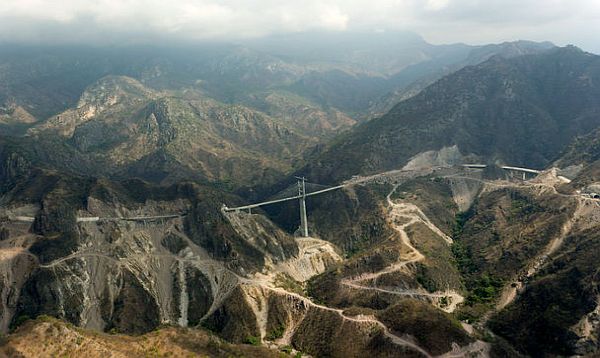Espinazo Del Diablo, Mexico — Lavender-blue peaks of the western Sierra Madre jut as far as the eye can see, the only hints of civilization: a tendril of smoke from burning corn residue, a squiggle of dirt road.
Then out of nowhere, a flat ribbon of concrete runs like a roller coaster over giant pylons, burrowing in and out of the mountainside until it seems to leap midair over a 1,200-foot river gorge via the world’s highest cable-stayed bridge, called the Baluarte.
The Durango-Mazatlán Highway is one of Mexico's greatest engineering feats, with 115 bridges and 61 tunnels designed to bring people, cargo and legitimate commerce safely through a mountain range known up until now for marijuana, opium poppies and an accident-prone road called the "Devil's Backbone."
Even those protesting the project say the 140-mile highway, expected to be completed in August, will change northern Mexico dramatically for the good. It will link port cities on the Gulf of Mexico and the Pacific by a mere 12-hour drive, and Mazatlán with San Antonio, Texas, in about the same time. The highway will eventually move 5 million vehicles a year, more than four times the number on the old road, plus more produce and goods from Asia to the Mexican interior and southern United States.
Sinaloa state tourism officials predict an "explosion" for the resort city of Mazatlán, hard hit by drug violence in recent years, as the new road gives 40 million Mexicans in interior states an easy drive to the beach.
"It will change the landscape of this part of the country," said Tourism Secretary Francisco Cordova. "It's an opportunity to develop these areas and diversify the local economy."
Read the full story at SeattleTimes.com


